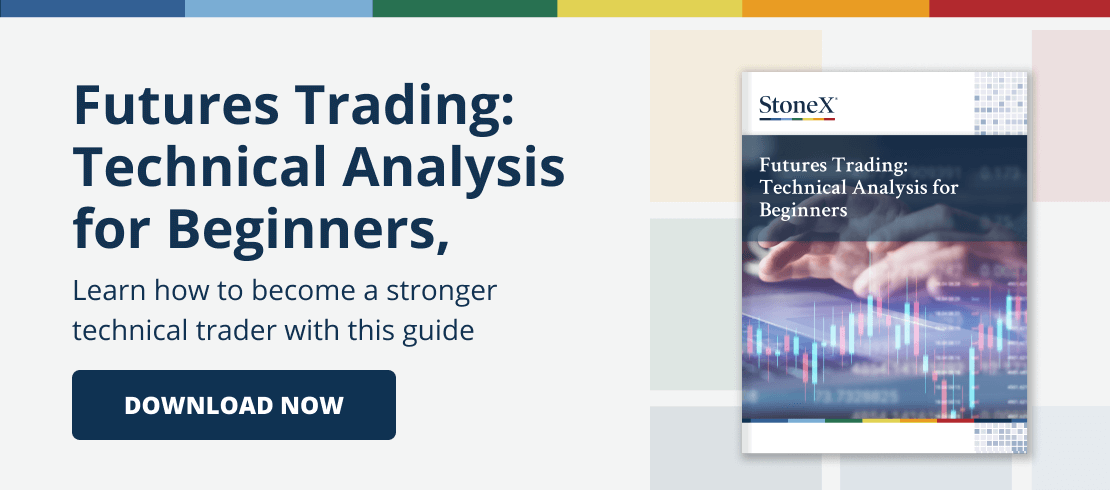Moving Average
Moving Average is generally used to identify or confirm a trend, and works best in trending markets. It will not signal you that a trend change is imminent, but it will help you to determine if an existing trend is still in motion and help you to confirm when a trend reversal has taken place.
Properties
Period. The number of bars in a chart. If the chart displays daily data, then period denotes days; in weekly charts, the period will stand for weeks, and so on. The application uses a default of 9.
Aspect: The Symbol field on which the study will be calculated. Field is set to “Default”, which, when viewing a chart for a specific symbol, is the same as “Close”.
Interpretation
Moving Averages are one of the most commonly used technical tools in commodity trading. They follow the trend, smooth the normal fluctuations of the data, and clearly signal long and short positions to the investor.
A Moving Average may be displayed as a normal crossover trading system when you select up to three different averages. Most investors and charting services use three moving averages. Their lengths typically consist of short, intermediate, and long-term. A commonly used system is 4, 9, and 18 intervals. An interval may be ticks, minutes, days, weeks, or even months; it depends upon the chart type.
Normal moving average crossover buy/sell signals are as follows:
- A buy signal is flashed when the short and intermediate term averages cross from below to above the longer term average.
- Conversely, a sell signal is issued when the short and intermediate term averages cross from above to below the longer term average.
You can use the crossover approach with only two moving averages, but market technicians suggest longer term averages (a longer interval) when trading only two moving averages in a crossover system.
View Other Technical Analysis Studies
- Bollinger Bands
- Commodity Channel Index
- Crack Spread
- Crush Spread
- Default
- Directional Movement Index
- Envelope
- Exponential Moving Average
- Exponential Oscillator
- High Low Moving Average
- Highest High / Lowest Low
- Historic Volatility
- Keltner Channel
- Least Squares Linear Regression
- Line Oscillator
- Momentum
- Moving Average
- Moving Average Convergence Divergence
- Moving Standard Deviation
- Open Interest
- Oscillator
- Parabolic Stop and Reversal
- Rate of Change
- Relative Strength Index
- Smoothed Moving Average
- Smoothed Oscillator
- Stochastic
- Variable Moving Average
- Volume
- Volume and Open Interest
- Weighted Close
- What is the Slow Stochastic Oscillator?
- Williams’ %R

